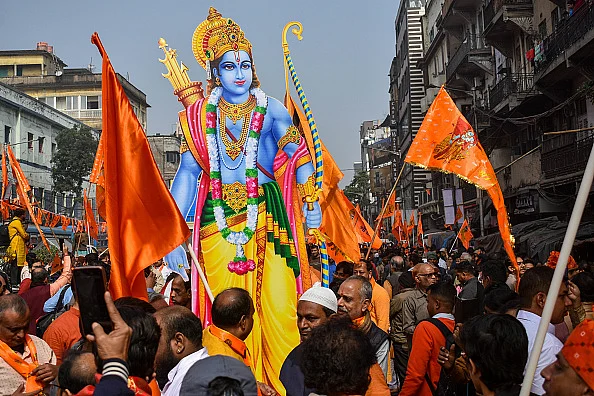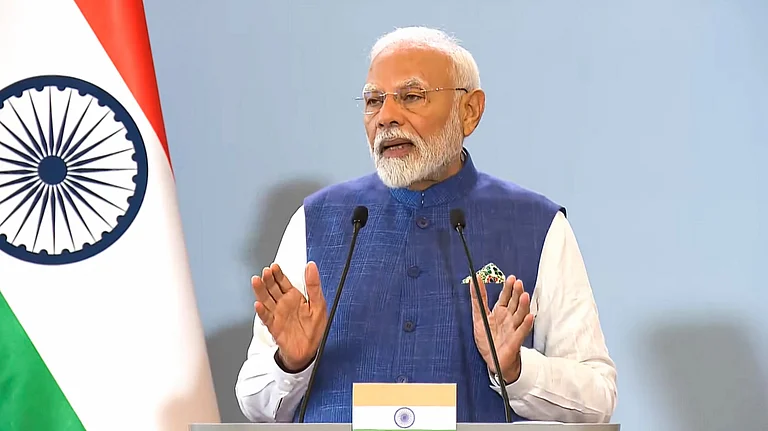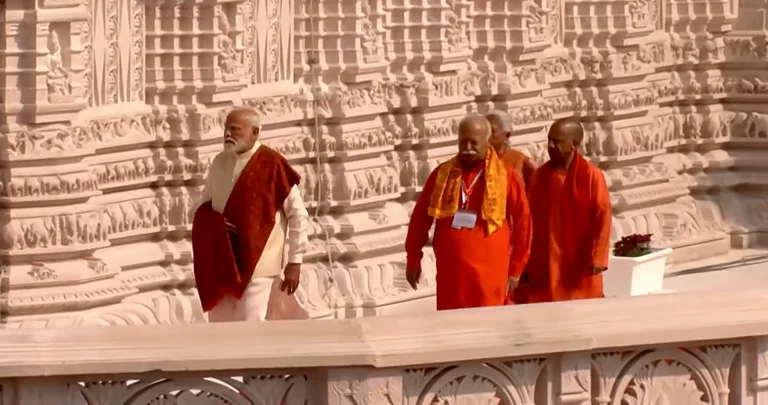In 1951, just ahead of the inauguration of Somnath temple, the then Prime Minister Jawaharlal Nehru wrote a letter to the President Rajendra Prasad. As Prasad was about to participate in the consecration ceremony, the first PM of independent India wrote, “I confess that I do not like the idea of your associating yourself with a spectacular opening of the Somnath Temple. This is not merely visiting a temple, which can certainly be done by you or anyone else, but rather participating in a significant function which unfortunately has a number of implications.”
India was still 25 years away from including the word ‘secularism’ in the preamble of its constitution. But the political position of Nehru was apparently clear. He could sense the numbers of political implication it entails. As Prasad was adamant to attend the ceremony, Nehru again wrote, “My dear Rajendra Babu, I am greatly worried about the Somnath affair. As I feared, it is assuming a certain political importance… In criticism of our policy in regard to it, we are asked how a secular Government such as ours can associate itself with such a ceremony which is, in addition, revivalist in character.”
However, these are all histories now. There is no qualm anymore related to the participation of the state in a Hindu religious ceremony. 73 years after Nehru’s letter to Prasad that rightly criticised such ‘revivalist’ projects that could lead to revengeful rectification of imagined historical loss, PM Modi following the consecration ceremony of Ram Temple said, “This is the beginning of a new dawn for India.”
Truly, it is new in its essence. The idea of secularism that the country used to celebrate didn’t stem from the concept of French secularism. It was ‘Indian’ in its nature that stemmed from the historical syncretism of the country. It came from the essence of Ganga-Jamuni Tehzeeb where the sisterhood of Hindu and Muslims used to be celebrated. Allama Iqbal who was later bestowed with the title of the National poet of Pakistan once wrote in his poem titled ‘Ram’,
hai rām ke vajūd pe hindostāñ ko nāz
ahle-nazar samajhte haiñ is ko imām-e-hind
(India is proud of Rama’s very name
To the discerning he is Imam-e-Hind)
Indian folklores while have always put forth the righteousness of Ram over Ravana, it has also given space to Imam Hussain’s fight for justice in Karbala. For Gandhi, Ram was the figure of not triumphalism but compassion. His frequent evocation of ‘Ishwar-Allah tero naam sabko sammati de Bhagwan’- was not merely a song, it was a way to understand India’s diverse political realities that has grown to accommodate people from different backgrounds within its fold.
On April 8, 1926, Gandhi wrote in Young India, “Hinduism does not consist in eating and not eating. Its kernel consists in right conduct, in correct observance of truth and non-violence. Many a man eating meat, but observing the cardinal virtues of compassion and truth, and living in the fear of God, is a better Hindu than a hypocrite who abstains from meat.”
These words of Gandhi, nonetheless hardly find any resonance at a time when the foundation of a temple on the ruins of a medieval mosque that was brought to rubbles through what the SC calls a ‘egregious act of violence’ is celebrated as a national glory. This consecration ceremony, as Pratap Bhanu Mehta says, is no more a Hindu religious event. It is a political spectacle. PM Modi while delivering his speech says, “I apologise to Lord Ram as we took so many years to build the temple.” This someway or other justifies the act of Babri demolition- that the apex court even didn’t approve of.
While the PM in his speech tried to showcase the unity of Hindus and the accommodative nature of Ram through the references to Nishad king and Shabari mata, Indian religious minorities like Muslims and Christians always remained outside the core. Or is it the reiteration of Hindu as a cultural identity that encompasses every Indian? In February, 2023, the UP Chief Minister Yogi Adityanath shared a video of his earlier speech where he was found saying, “Hindu identity is the cultural citizenship of every Indian. Hindu is not a creed, religion, or sect. This is a cultural term.”
Referring to India as Hindu Rashtra, the Mahant of Gorakhpur said, “When someone from India goes to perform Haj, he is addressed as a Hindu there. No one there sees him as Haji, no one accepts him as Islam, there he is addressed by the name of Hindu. If seen in that context, India is a Hindu Rashtra, because every citizen of India is a Hindu.”
Does the presence of Modi in the consecration ceremony along with UP CM Adityanath and RSS chief Mohan Bhagwat certainly indicate the foundation of Hindu Rashtra? Is wherereligion no more a matter of personal faith- it is a matter of public celebration and assertion?



























